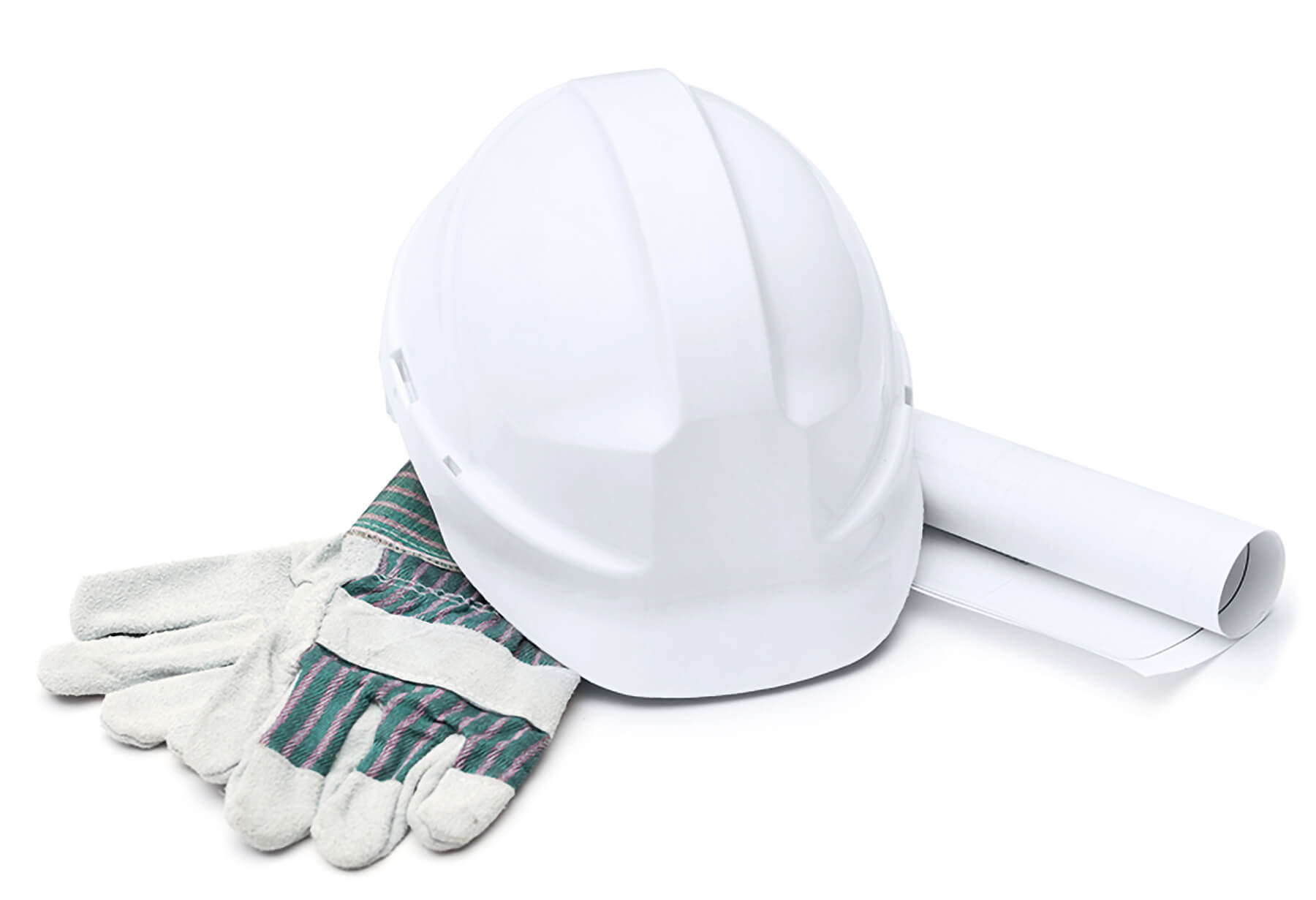Positions on Transport, Technology, Innovation
the fourth issue of Level-X
After we reported in detail on Japanese eating habits when travelling by train in the last issue of Level X, we would like to devote this issue to a forward-looking topic for transport safety on regional railways: Almost exactly one year ago, on 1 October 2020, Austria’s first “Simplified Technical Safety System” started regular operation on the route of the Citybahn Waidhofen.
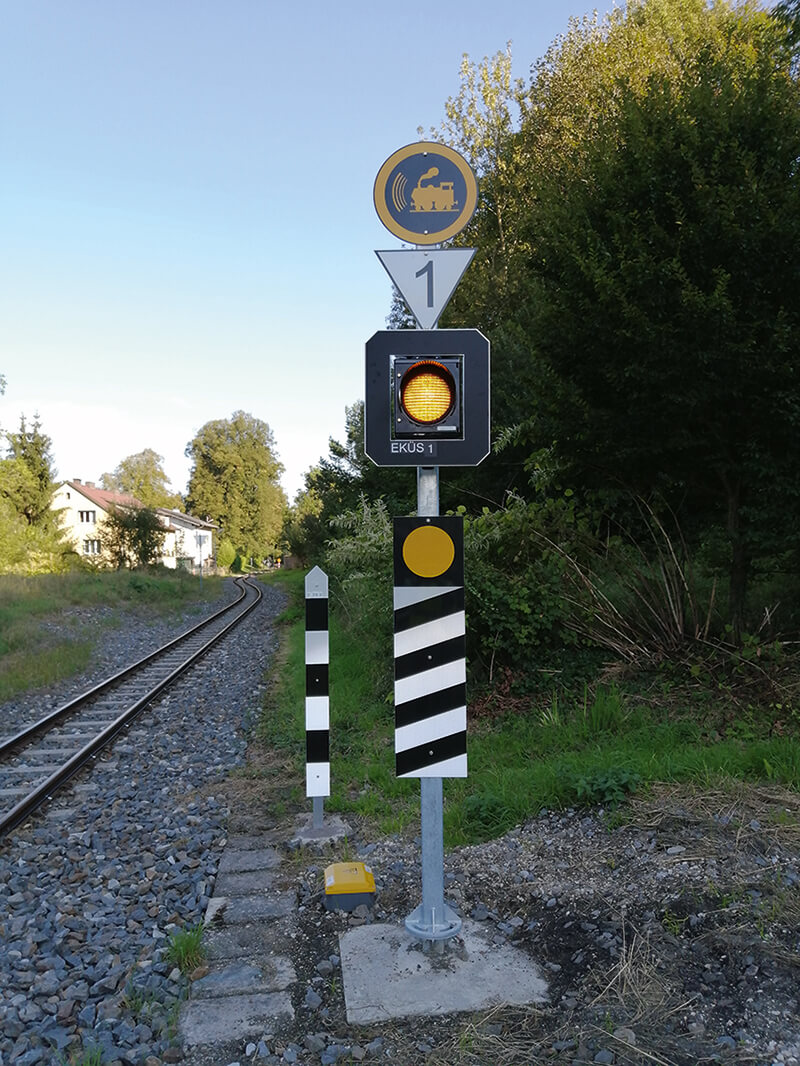
Reason enough to take stock and present the VTS project to you in detail.
As always, I hope you enjoy reading this issue,
Managing Director Laurenz Trunner and the EBE Solutions team.
VTS at a glance
Initial situation
In Austria, about 1,300 railway crossing facilities are currently still secured by means of acoustic signals. The current Railway Crossing Ordinance (EisbKrV 2012) allows railway crossings to be secured by acoustic signals up to a speed of 20-25 km/h. In practice, however, the sound insulation in modern cars means that drivers often only hear these signals late. In practice, however, it has been shown that due to the sound insulation in modern cars, drivers often only perceive these signals late (at a distance of approx. 120 metres). In addition, there are repeated complaints from residents because of the constant acoustic signals, which reduces the acceptance of railway lines, especially in inhabited areas. Traditional solutions are also problematic in terms of costs: the construction costs of safety systems for railway crossings have so far hit the budgets of the municipalities hard. In many cases, it is therefore more logical to abandon a level crossing than to invest in expensive safety installations. However, every level crossing that is closed automatically increases the distances travelled by cars in the region, which in turn is detrimental to the CO2 balance. Many good reasons for a technical revolution!
Objective
The primary objective was to significantly reduce the construction and maintenance costs of technical safety installations and thus to create the prerequisite for being able to better secure these level crossings in the future. Safety was given the highest priority, and comprehensive accompanying documentation was to scientifically substantiate the results.
Technical implementation
After international research and a survey conducted by the ÖAMTC, the decision was made in favour of a design with familiar light signals. Therefore, the system looks familiar to road users at first glance. The core of the concept and the technical development was the reduction to those essential functions that are required for the simplest traffic conditions (little road traffic, branch lines). EBE Solutions developed the VTS system on the basis of the tried and tested ISIS-LC system, a modular system that is ideally suited for technical conversions. As a result, the VTS also obtained approval according to CENELEC standards without any problems.
Off-grid and cost-efficient
thanks to new solar technology
The completely off-grid supply of the system is a novelty. For the first time, EBE Solutions uses new battery technologies in combination with photovoltaic cells, which enable the complete energy supply of the plant – even in the winter months when there is little sunshine. The elimination of expensive excavation work for the power supply enables a significant cost reduction – especially for railway crossings that are far away from towns and villages.
Conclusion
The successful project with Niederösterreich Bahnen has laid the foundation for a new era of traffic safety on branch lines. This project impressively shows that the course will soon be set for a cost-efficient replacement of the previous acoustic signals – and thus for making rail traffic more attractive.
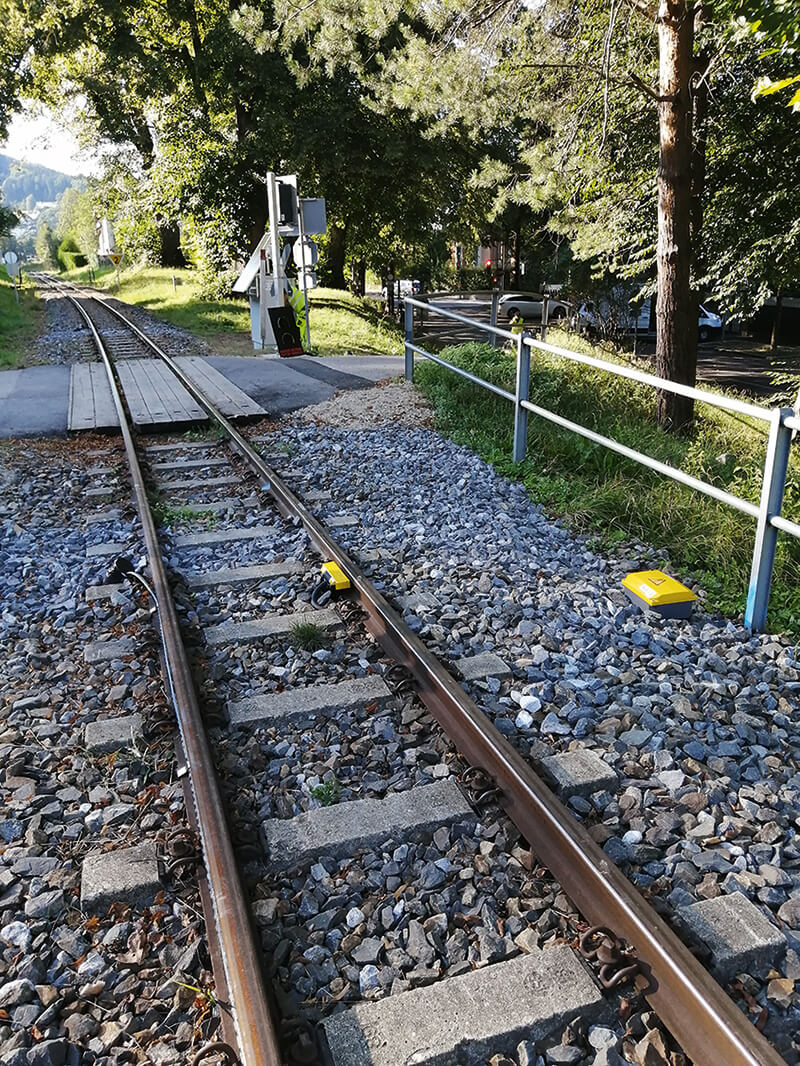
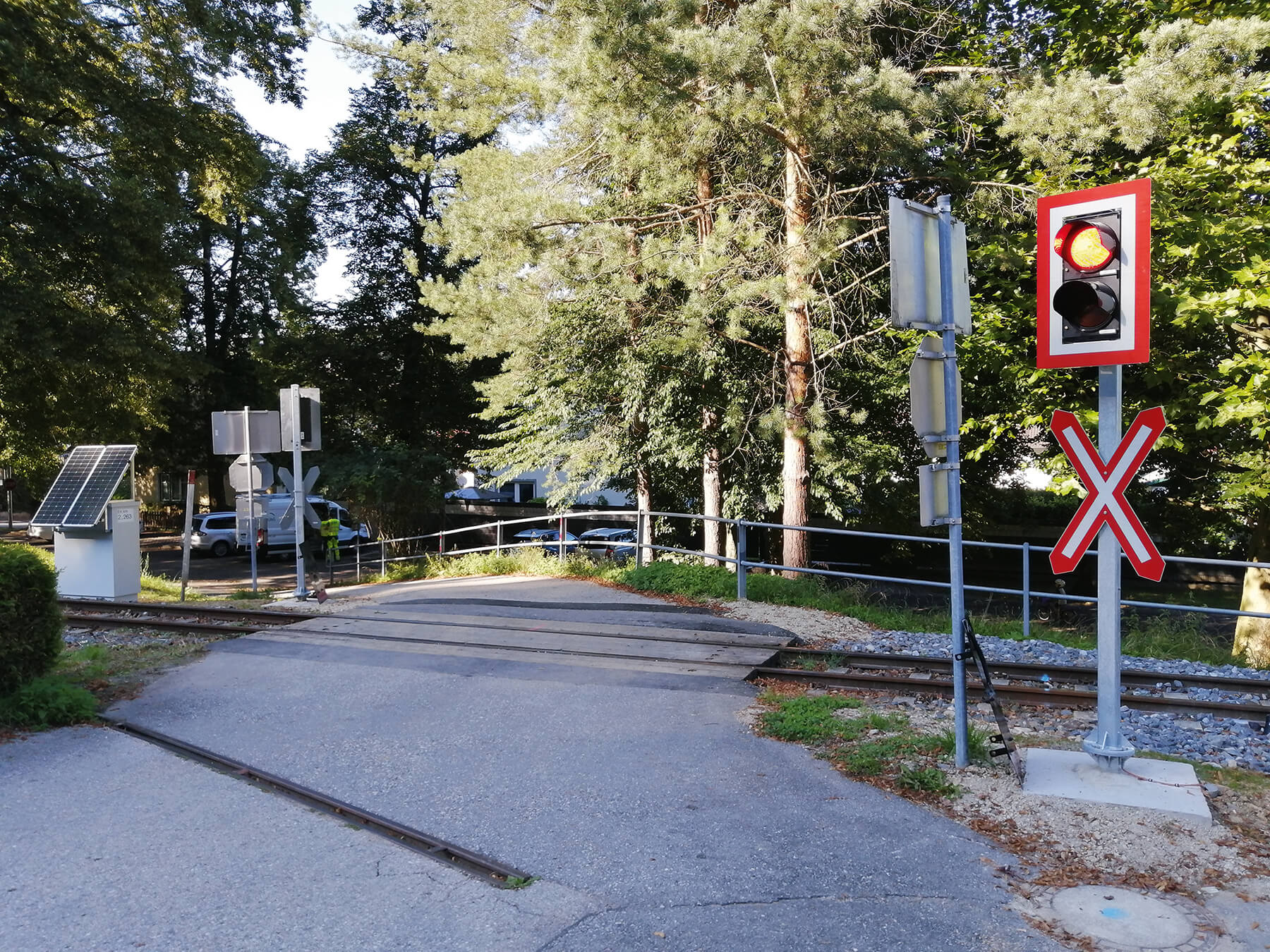 If the VTS can‘t be controlled by the train, a separate route signage system comes into effect.
If the VTS can‘t be controlled by the train, a separate route signage system comes into effect.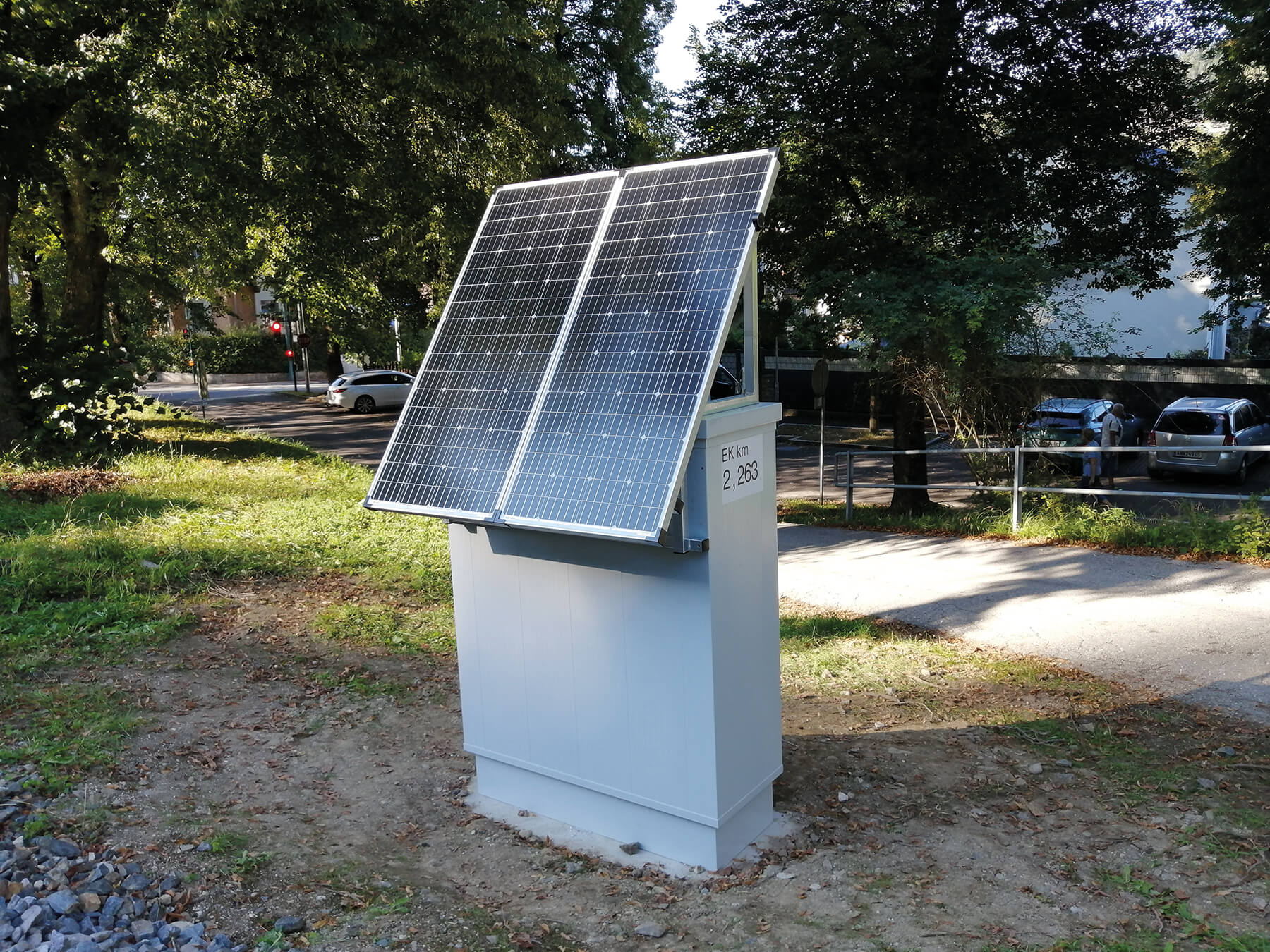 All year round Off-grid thanks to Photovoltaics.
All year round Off-grid thanks to Photovoltaics.
Niederösterreich Bahnen
Level X:
Niederösterreich Bahnen was the first to advocate for the new safety concept and launched an Austria-wide pilot project. How did this come?
Barbara Komarek:
“We at Niederösterreich Bahnen, as the largest private railway in Austria, are working intensively to make the operation of regional railways innovative and cost-efficient. We are very open to new technologies. For the Citybahn Waidhofen, we put together a package for the future together with the city in 2019 – new stops, half-hourly service and the elimination of whistling through the installation of traffic light systems. This is where VTS came in – reducing the cost of a traffic light by up to 2/3 while maintaining safety is a real win-win situation.”
Level X: What is so new about the solution?
Barbara Komarek:
“Together with all those involved (VAI, authorities, technical partner), we have succeeded in building a system that is ideal for simple traffic conditions. The new VTS uses two instead of eight light signals and fewer sensors than a conventional safety system. Therefore, it can be powered by solar panels off-grid. The biggest innovation of the system is its simplified design and the resulting massive cost and construction time savings.“
Level X: How do these savings come about?
Barbara Komarek:
“It is a sum of factors that make the VTS so attractive in terms of costs. Fewer light signs enable solar-based operation. The photovoltaic panel with its powerful rechargeable battery provides the system with a self-sufficient power supply. Long and, above all, expensive trench excavations for the power supply are no longer necessary. In addition, fewer foundations have to be laid, which in turn shortens the construction time. All in all, the total costs could be reduced significantly below €100,000.”
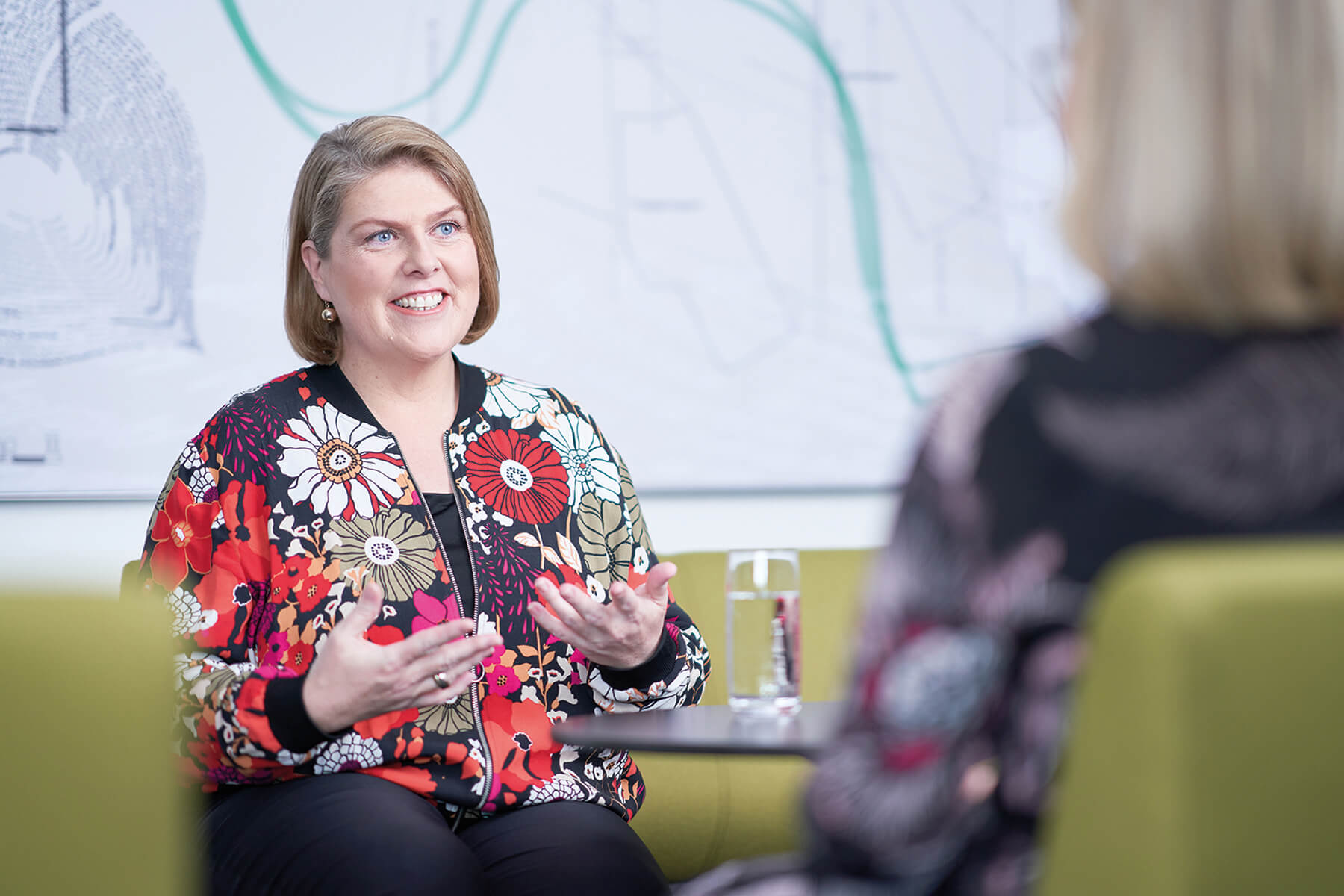 © NB/Monihart
© NB/Monihart
Level X: And how was the acceptance?
Barbara Komarek:
“We were impressed by the results of the accompanying scientific evaluation of the project. It showed that the road users did not notice any deviations from known traffic light systems. Our train drivers, who were extensively trained as part of the project, also confirmed the unrestricted practical suitability of the new VTS.”
Level X: After one year of operation: What will happen now?
Barbara Komarek:
“So far, the three systems based on the EisbKrV 2012 are running under the title of testing for trial operation. The task now is to anchor the VTS system as a recognised type of safety system. Here I hope for a strong alliance between politics, municipalities and interest groups. In any case, we at Niederösterreich Bahnen will keep at it – for the sake of safety!”“
Level X: Thank you for the interview.
EBE Solutions as an one-stop-shop!
Have you ever seen your IT partner in a construction vehicle wearing a safety helmet?
What may seem strange at first glance has long been standard practice at EBE Solutions. Because more and more often we are commissioned as a “general contractor” with the entire process chain: planning — approval procedure — execution of the construction project — technical installation — submission and support of the approval procedures — commissioning. This is not surprising, because it saves the client a lot of communication with the various trades, benefits from a solution-oriented contact person and thus also saves costs. In countless projects in the past, we have been able to gather a lot of experience, which we are happy to pass on to our clients. We know who supplies the cheapest components, who is a suitable contact person for the various construction services or which construction measures the local building yard can carry out. Our customers are increasingly making use of this knowledge, including recently in the context of two ÖBB projects. This is why EBE employees wearing safety helmets are not a rare sight on construction sites.
